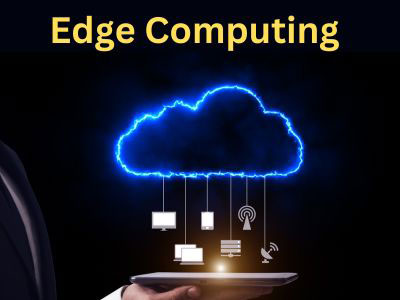What Are The Cutting-Edge Technologies In 2025?
Key Takeaway
The cutting-edge technologies in 2025 include quantum computing, which revolutionizes problem-solving in fields like cryptography and logistics with unmatched speed and efficiency. AI continues to expand its role in everyday applications, enhancing sectors like healthcare, customer service, and autonomous systems. These advancements drive significant changes across industries.
Sustainable tech innovations focus on energy efficiency, integrating renewable resources with advanced edge solutions for Industry 4.0. Additionally, AR/VR technologies are evolving, creating immersive experiences for gaming, education, and virtual collaboration. These breakthroughs are reshaping how we interact with technology and the world around us.
Quantum Computing’s Role in Revolutionizing Systems
Quantum computing is a cornerstone of innovation in 2025, revolutionizing industries by solving problems beyond the capabilities of classical computers. Unlike traditional systems that process data in binary, quantum computers use quantum bits (qubits) to perform calculations at unprecedented speeds. This breakthrough enables advancements in fields such as cryptography, logistics, and material science.
For example, quantum computing accelerates drug discovery by simulating molecular interactions in seconds rather than years. In logistics, it optimizes complex supply chains, ensuring faster deliveries and reduced costs. Financial institutions are leveraging quantum systems for portfolio optimization and risk management, gaining a competitive edge in volatile markets.
Despite its promise, quantum computing is still in its early stages, requiring substantial investments in infrastructure and talent. However, leading tech giants and research institutions are making strides to make this technology more accessible. By 2025, quantum computing is not just a theoretical concept—it’s a game-changing tool reshaping industries.

The Rise of AI in Everyday Applications
Artificial intelligence (AI) has permeated nearly every aspect of life in 2025, from smart assistants to industrial automation. Advances in natural language processing (NLP), computer vision, and machine learning (ML) have made AI smarter, more intuitive, and highly adaptable. Everyday applications now seamlessly integrate AI, improving convenience and efficiency.
In healthcare, AI-powered diagnostic tools analyze medical images with pinpoint accuracy, assisting doctors in early disease detection. Retail has transformed through AI-driven personalization, offering consumers tailored recommendations and dynamic pricing. In transportation, AI optimizes routes and enables autonomous vehicles to navigate safely and efficiently.
AI is no longer confined to large enterprises. Thanks to its democratization, small businesses and startups can access powerful AI tools to enhance operations and innovate. This accessibility ensures that AI remains a driving force in shaping how individuals and industries interact with technology.
Advanced Edge Solutions for Industry 4.0
Industry 4.0 thrives on cutting-edge edge computing solutions that bring real-time data processing closer to the source. In 2025, advanced edge systems power smart factories, supply chains, and connected devices, enabling businesses to operate with unprecedented precision and speed.
In manufacturing, edge devices monitor and analyze machine performance in real time, reducing downtime and improving productivity. Predictive maintenance, powered by edge AI, prevents costly equipment failures. Logistics companies leverage edge computing to track shipments and optimize delivery routes dynamically, ensuring customer satisfaction.
What makes these edge solutions groundbreaking is their ability to handle complex AI models while maintaining low latency. Innovations in edge hardware, such as compact GPUs and AI accelerators, have made these systems more efficient and scalable. As businesses adopt these technologies, Industry 4.0 continues to evolve, redefining how industries operate and deliver value.
Sustainable Tech Innovations Driving Efficiency
Sustainability is at the heart of technological advancements in 2025, with innovations focusing on reducing energy consumption and promoting eco-friendly practices. Green technologies are driving efficiency across industries, from renewable energy systems to energy-efficient devices and sustainable manufacturing processes.
Smart grids powered by AI and edge computing optimize energy distribution, minimizing waste and integrating renewable sources seamlessly. For example, solar and wind energy systems use predictive analytics to balance supply and demand effectively. In agriculture, sustainable tech solutions like IoT-enabled irrigation systems conserve water and enhance crop yields.
Energy-efficient data centers and devices are also gaining traction. Low-power processors and AI-optimized systems reduce carbon footprints while maintaining performance. These innovations reflect a global shift toward sustainability, driven by the realization that technological progress must align with environmental preservation. In 2025, tech is not just about innovation—it’s about responsibility.
Evolution of AR/VR Technologies in Immersive Experiences
Augmented reality (AR) and virtual reality (VR) technologies have evolved dramatically in 2025, delivering immersive experiences across entertainment, education, healthcare, and retail. With advancements in hardware, software, and connectivity, AR/VR applications are more accessible and engaging than ever.
In entertainment, AR/VR enhances gaming by creating highly interactive virtual environments. Gamers can experience hyper-realistic worlds with minimal latency, thanks to 5G and edge computing. Education is also transforming, with AR/VR creating interactive learning modules that make complex subjects more engaging and easier to understand.
Healthcare has embraced these technologies for training and treatment. Surgeons use VR simulations for practice, while AR assists in real-time procedures by overlaying critical information. Retail, too, benefits as customers use AR to visualize products in their homes before purchase.
The evolution of AR/VR technologies marks a shift toward immersive, experiential solutions. As these technologies become more integrated into daily life, they are not just enhancing experiences—they are redefining how we interact with the world.
Conclusion
The cutting-edge technologies of 2025, from quantum computing and AI to advanced edge solutions, sustainable innovations, and AR/VR advancements, are transforming industries and everyday life. These innovations are not just incremental improvements; they are paradigm shifts that redefine what’s possible. As these technologies continue to evolve, they promise to create a future that is smarter, more sustainable, and deeply interconnected, shaping a world where innovation knows no bounds.

